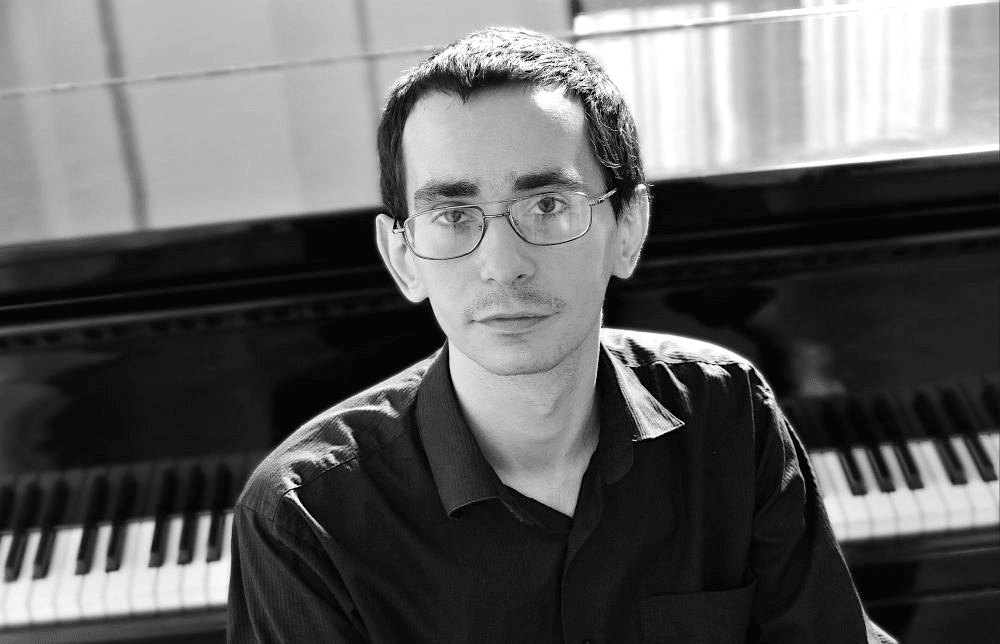Mourning two vital maestros of Mediterranean music
NewsThe British opera singer and writer Mark Glanville has been devastated by the sudden deaths of two folk musicians in southern Italy. Giovanni Rossomano died of an undetected heart condition at 40. The cause of Giuseppe Nisi’s death is also cardiac arrest.
Mark writes:
This week Giovanni Rossomanno, one of the finest ‘zampogna’ (four-chanter bagpipe) and ‘ciaramella’ (shepherd’s oboe) players in Calabria, and Giuseppe Nisi, a singer who fronted the Pizzica group, ‘I Cantori di Villa Castelli’, both died. Giovanni was just 40. As representatives of the deep musical traditions of Calabria and Puglia, their deaths are a great loss to the musicians, dancers and audiences of those regions, and to me personally. I was privileged to perform informally with them both, and write about them in ‘Come and Dance in Puglia’, my forthcoming book about the region and its music.
Giovanni Rossomanno was one of the first people I met on arriving in Calabria.
‘We eventually came to a halt at the bottom of an unmade road where a newly gravelled carpark sparkled above a cliff. Scarcely had we done so when several large vehicles appeared with the Calabrian contingent, including Giovanni Rossomanno, a red-faced, genial giant, and Anna Invidia a striking, dark-haired girl, reputedly of gypsy stock. If her singing was visceral, so was the playing and dancing of Giovanni Rossomanno, owner of the largest ‘zampogna’ there, the length of his own extensive torso. I marvelled that he found enough breath to fill the vast goatskin, but he managed, apparently without effort, balancing it on top of his head when not playing it conventionally, dancing an agile version of the tarantella whenever he was not playing himself, a musical Hercules. I had brought along my pugliese-built ciaramella. Giovanni had two; one tuned to A, the other G. He kept them stuck inside his belt while he danced. His quick, staccato tonguing, so much a part of the traditional style of playing in Calabria, was virtuosic. ‘He is tradition’, Micu, a fellow zampogna player informed me later. ‘You know why he left at two in the morning? Because he had to go home to deliver a couple of kids from his nanny goat.’
Giuseppe Nisi I first encountered at a house party in Puglia.
‘Accompanying the dancers were the oldest members of the party, a cloth-hatted trio of septuagenarians comprising a singer, accordion and tambourine. They geed up the dancers with their relentlessly jolly music and frequent words of encouragement:
‘Brave le coppie!’ (Well done the couples!)
The dancer and musician Daniela Mazza, my Beatrice through this Paradise, told me they were ‘I Cantori di Villa Castelli.’ I realised I had seen them before, in a rather less intimate setting, before a crowd of 200,000 people at the final night of ‘La Notte della Taranta’ in Melpignano. Leading the band tonight was Giuseppe Nisi, tall, ruddy-faced, the epitome of geniality. Another member of the group, Vituccio, the tiny goatherd in a red neckerchief who had dominated the stage at Melpignano was absent, but Giuseppe’s unyielding joy was more than adequate compensation. Daniela suggested I play my ciaramella with them. Little larger than a standard recorder, made of olive wood, its bell ornately carved, it was the loudest, rawest instrument I had ever played (or possibly heard), the quack of a Calabrian duck among pugliese swans. Most tolerant of birds, ‘I Cantori’ allowed me to grace their waters, and even to sing ‘Kalinitta’ from the alien Griko tradition of the Salento, fifty kilometres further south. Giuseppe and ‘I Cantori di Villa Castelli’ frequently turned up at Pizzica parties, both large and small. They sought no praise or honour, just the joy of being able to play the music of Puglia’s marvellous dance tradition.






Just a little point, the zampogna has two chanters (one for each hand) and two drones – not four chanters. Here’s a short video featuring Giovanni Rossomanno – lovely, authentic music making, and great tuning: https://www.youtube.com/watch?v=t80cYgSA-zQ
Thank you. I appreciate the correction. I was trying to distinguish the zampogna from the Scottish bagpipe familiar to most Brits (and many others.) I accompanied Gianni on ciaramella at Brancaleone a few years ago. He was a wonderful musician, dancer and all round force of nature. A truly awful loss to the many who loved him and to that world.
Here’s a lovely one, if you can see it on Facebook; https://www.facebook.com/massimiliano.rossomanno.7/videos/526637365238252